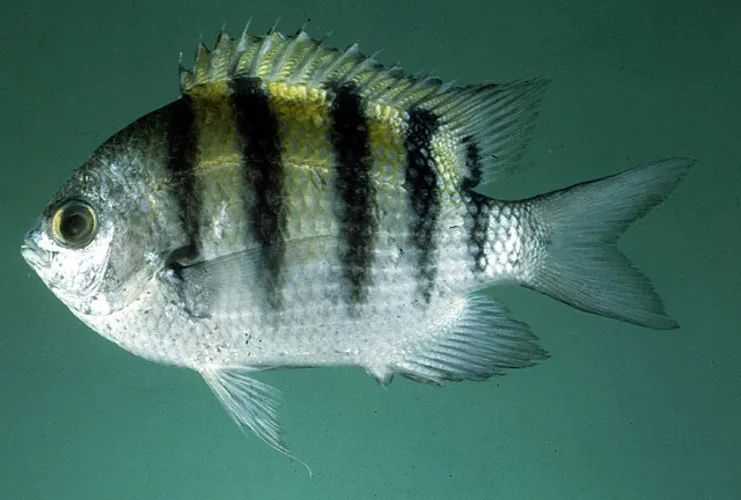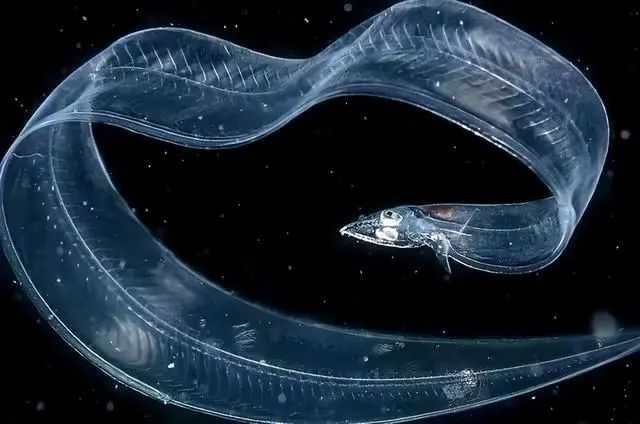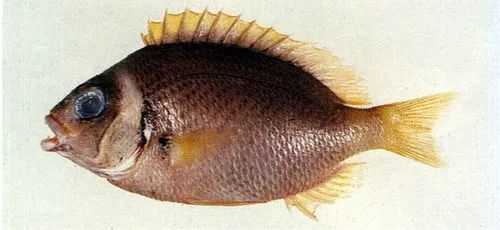Growing up to 15 centimeters in length, the five-lined damselfish sports a robust, laterally compressed body with a striking pattern. Its base color ranges from yellow to orange, adorned with five dark, vertical bands that run across its flanks, creating a sharp contrast against the lighter background. The fins often display a bright yellow hue, enhancing its visual appeal. Large, expressive eyes and a small, pointed mouth equipped with sharp teeth give it a determined look, reflecting its aggressive nature when defending its territory.
Native to shallow coral reefs, lagoons, and rocky shores, Stegastes fasciolatus is a diurnal species that actively forages for algae and small invertebrates during the day. It uses its strong jaws to scrape algae from coral surfaces, playing a vital role in controlling algal growth and preventing overgrowth that could harm corals. This damselfish is highly territorial, particularly during the breeding season, when males construct nests from algae and defend them fiercely against intruders, including other fish and even divers. Females lay adhesive eggs on the nest, which males fertilize and guard until hatching.
While the five-lined damselfish is not targeted for commercial fishing, it faces threats from coral reef degradation due to climate change, pollution, and destructive fishing practices. Rising sea temperatures lead to coral bleaching, reducing the availability of its habitat and food sources. Additionally, overfishing of its predators can disrupt the ecosystem balance, indirectly affecting the damselfish population. Conservation efforts, such as marine protected areas and sustainable reef management, are essential to preserve this species and the biodiversity of coral reefs. As an iconic reef resident, Stegastes fasciolatus serves as a reminder of the delicate yet dynamic nature of marine ecosystems and the importance of their protection.










